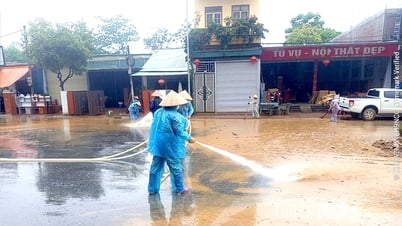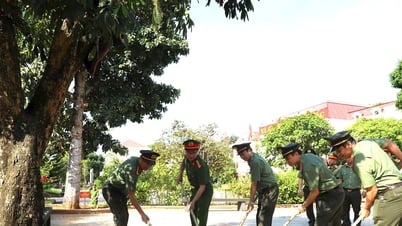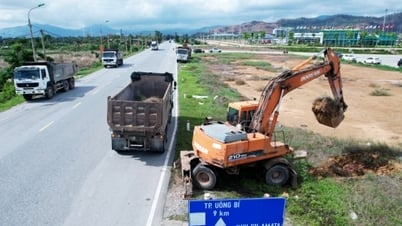On May 19, information from the Dak Mil District People's Committee said that there were results of the inspection and handling of the reflection on the overload and smoldering situation at the Dak Lao commune landfill that Dak Nong Newspaper had previously reported.
According to local authorities, the Dak Lao landfill has an area of 2.8 hectares, put into use since 2011, with 5 garbage cells. The landfill is located about 7km from the district center, 4km from the nearest residential area. The landfill is adjacent to people's production land, separated by a 3m wide access road.
Dak Lao Commune landfill is a gathering place for waste from 4 collection units in 4 communes and towns. Every day, this area receives about 50 tons of waste, most of which is not classified.

Regarding the garbage overload situation, Dak Mil District People's Committee said that in addition to the large amount of garbage every day, the transportation and collection are not in the right place (garbage trucks do not dump into garbage containers but dump near traffic roads and internal roads), leading to a large amount of garbage stagnating and blocking the entrance and exit.
In the first months of 2025, due to hot weather, no rain, combined with a large amount of garbage, the fires smoldered, lasted for a long time, and could not be completely extinguished.
After receiving feedback from Dak Nong Newspaper, Dak Mil District People's Committee directed relevant units to inspect, verify and resolve.
Dak Mil District requires garbage collection and transportation units not to dump garbage on top of fires, and to take measures to separate burning garbage and new garbage.
Local authorities are actively calling for investors to build a solid waste treatment and recycling plant. While waiting for construction, Dak Mil district is strengthening treatment measures to limit the impact of stagnation, causing environmental pollution, affecting people's lives.
Previously, Dak Nong Newspaper reported on the environmental pollution around the Dak Lao landfill. This situation has lasted for many years, peaking during the dry season, affecting the health and production of many households in the area.
Source: https://baodaknong.vn/chinh-quyen-len-tieng-viec-bai-rac-o-dak-nong-chay-am-i-4-thang-253011.html



![[Photo] Panorama of the Opening Ceremony of the 43rd Nhan Dan Newspaper National Table Tennis Championship](https://vphoto.vietnam.vn/thumb/1200x675/vietnam/resource/IMAGE/2025/5/19/5e22950340b941309280448198bcf1d9)
![[Photo] Close-up of Tang Long Bridge, Thu Duc City after repairing rutting](https://vphoto.vietnam.vn/thumb/1200x675/vietnam/resource/IMAGE/2025/5/19/086736d9d11f43198f5bd8d78df9bd41)

![[Photo] General Secretary To Lam attends the conference to review 10 years of implementing Directive No. 05 of the Politburo and evaluate the results of implementing Regulation No. 09 of the Central Public Security Party Committee.](https://vphoto.vietnam.vn/thumb/1200x675/vietnam/resource/IMAGE/2025/5/19/2f44458c655a4403acd7929dbbfa5039)
![[Photo] President Luong Cuong presents the 40-year Party membership badge to Chief of the Office of the President Le Khanh Hai](https://vphoto.vietnam.vn/thumb/1200x675/vietnam/resource/IMAGE/2025/5/19/a22bc55dd7bf4a2ab7e3958d32282c15)



















![[Photo] Prime Minister Pham Minh Chinh inspects the progress of the National Exhibition and Fair Center project](https://vphoto.vietnam.vn/thumb/1200x675/vietnam/resource/IMAGE/2025/5/19/35189ac8807140d897ad2b7d2583fbae)























































![[VIDEO] - Enhancing the value of Quang Nam OCOP products through trade connections](https://vphoto.vietnam.vn/thumb/402x226/vietnam/resource/IMAGE/2025/5/17/5be5b5fff1f14914986fad159097a677)



Comment (0)